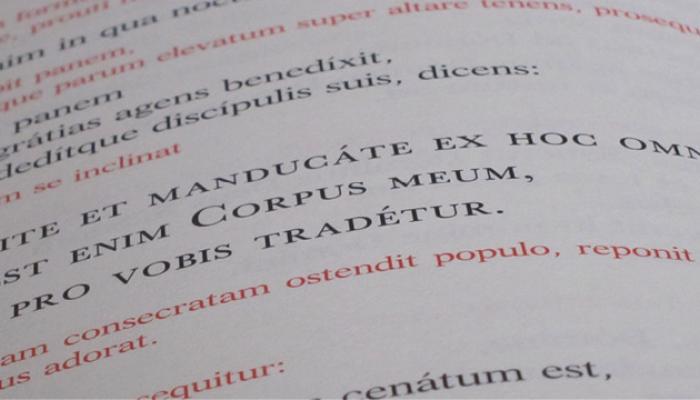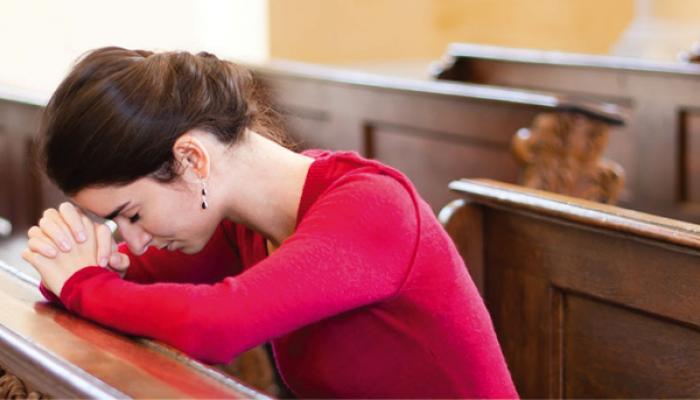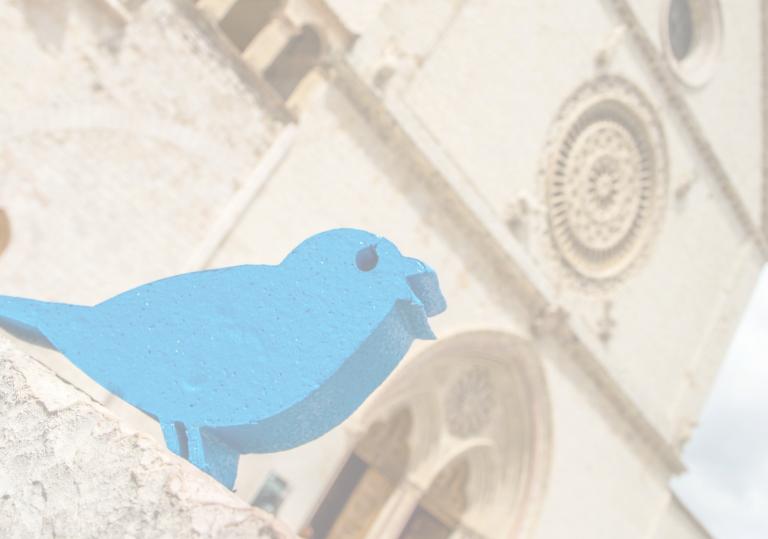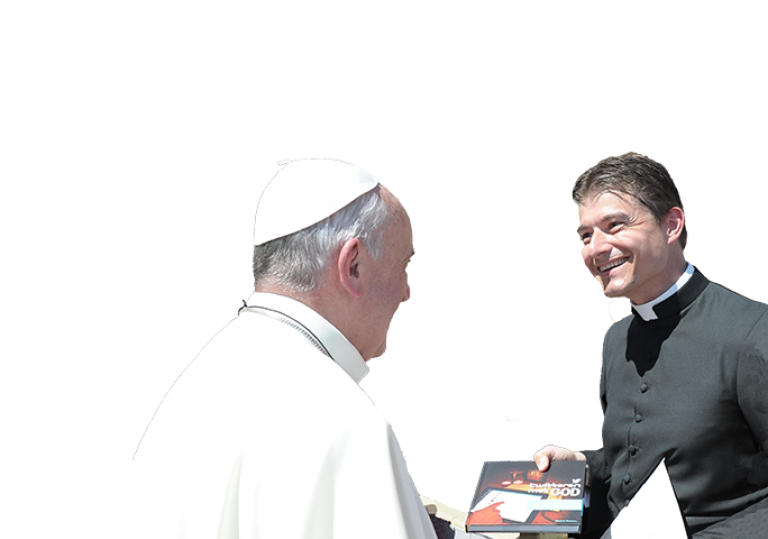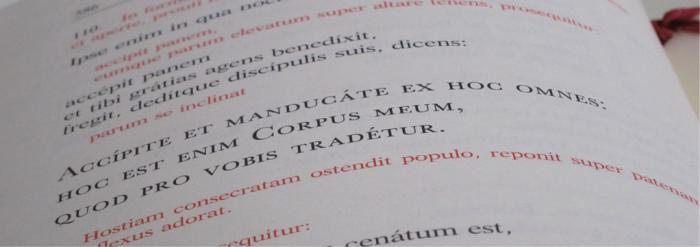
3.24 Cos’è la liturgia?
La parola “liturgia” viene dal Greco e significa servizio pubblico. Liturgia è “il complesso dei simboli, inni ed azioni con cui la Chiesa manifesta ed esprime la sua adorazione di Dio” (Dom Guéranger). Nella liturgia noi esprimiamo quello in cui crediamo, proprio come il nostro linguaggio del corpo esprime ciò che intendiamo. Ancor più importante, nella liturgia riceviamo la grazia di Dio e la sua presenza.
La liturgia riguarda qualcosa di più grande di noi; riguarda Dio. La liturgia della Chiesa cattolica romana è la stessa in tutto il mondo. Questo significa che si può seguire la Messa dovunque, anche se non si comprende la lingua: tutti i gesti e le azioni rimangono le stesse. L’app #TcDIO può aiutare in questo: contiene i testi normali della Messa in molte lingue, per aiutarti a pattecipare alla liturgia dovunque tu sia.
What is liturgy?
Liturgy is the official divine worship of the Church.
A Liturgy is not an event that depends on good ideas and great songs. No one makes or invents a liturgy. It is something living that grew over millennia of faith. A Mass is a holy, venerable action. Liturgy becomes exciting when one senses that God himself is present under its sacred signs and its precious, often ancient prayers. [Youcat 167]
What is the essence of every liturgy?
Liturgy is always in the first place communion or fellowship with Jesus Christ. Every liturgy, not just the celebration of the Eucharist, is an Easter in miniature. Jesus reveals his passage from death to life and celebrates it with us.
The most important liturgy in the world was the Paschal liturgy that Jesus celebrated with his disciples in the Upper room on the night before his death. The disciples thought that Jesus would be commemorating the liberation of Israel from Egypt. Instead, Jesus celebrated the liberation of all mankind from the power of death. Back in Egypt it was the “blood of the lamb” that preserved the Israelites from the angel of death. Now he himself would be the lamb whose blood saves mankind from death. For Jesus’ death and resurrection is the proof that someone can die and nevertheless gain life. This is the genuine substance of every Christian liturgy. Jesus himself compared his death and resurrection with Israel’s liberation from slavery in Egypt. Therefore, the redemptive effect of Jesus’ death and resurrection is called the Paschal mystery. There is an analogy between the life-saving blood of the lamb at the exodus of the Israelites fromEgypt (ex 12) and Jesus, the true Paschal lamb that has redeemed mankind from the bondage of death and sin. [Youcat 171]
What is the most profound origin of the liturgy?
The most profound origin of the liturgy is God, in whom there is an eternal, heavenly banquet of love—the joy of the Father, the Son, and the Holy Spirit. Because God is love, he would like to let us participate in the feast of his joy and to grant us his blessings.
Our earthly liturgies must be celebrations full of beauty and power: Feasts of the Father who created us—that is why the gifts of the earth play such a great part: the bread, the wine, oil and light, incense, sacred music, and splendid colors. Feasts of the Son who redeemed us—that is why we rejoice in our liberation, breathe deeply in listening to the Word, and are strengthened in eating the eucharistic Gifts. Feasts of the Holy Spirit who lives in us—that is why there is a wealth of consolation, knowledge, courage, strength, and blessing that flows from these sacred assemblies. [Youcat 170]
In what way is the Father the source and the goal of the liturgy?
Through the liturgy the Father fills us with his blessings in the Word made flesh who died and rose for us and pours into our hearts the Holy Spirit. At the same time, the Church blesses the Father by her worship, praise, and thanksgiving and begs him for the gift of his Son and the Holy Spirit. [CCCC 221]
What is the work of Christ in the liturgy?
In the liturgy of the Church, it is his own paschal mystery that Christ signifies and makes present. By giving the Holy Spirit to his apostles he entrusted to them and their successors the power to make present the work of salvation through the Eucharistic sacrifice and the sacraments, in which he himself acts to communicate his grace to the faithful of all times and places throughout the world. [CCCC 222]
How does the Holy Spirit work in the liturgy of the Church?
The very closest cooperation is at work in the liturgy between the Holy Spirit and the Church. The Holy Spirit prepares the Church to encounter her Lord. He recalls and manifests Christ to the faith of the assembly. He makes the mystery of Christ really present. He unites the Church to the life and mission of Christ and makes the gift of communion bear fruit in the Church. [CCCC 223]
What is the liturgy? If we open the Catechism of the Catholic Church... we can read that the word “liturgy” originally meant: a “service in the name of/on behalf of the people”. If Christian theology made use of this word of the Greek world, it obviously did so thinking of the new People of God born from Christ who opened his arms on the Cross to unite human beings in the peace of the one God. A “service on behalf of the people”, a people which did not exist on its own, but was formed through the Paschal Mystery of Jesus Christ. Indeed, the People of God does not exist through ties of kinship, place or country. Rather it is always born from the action of the Son of God and from the communion with the Father that he obtains for us. [Pope Benedict XVI, General Audience, 26 Sept. 2012]

